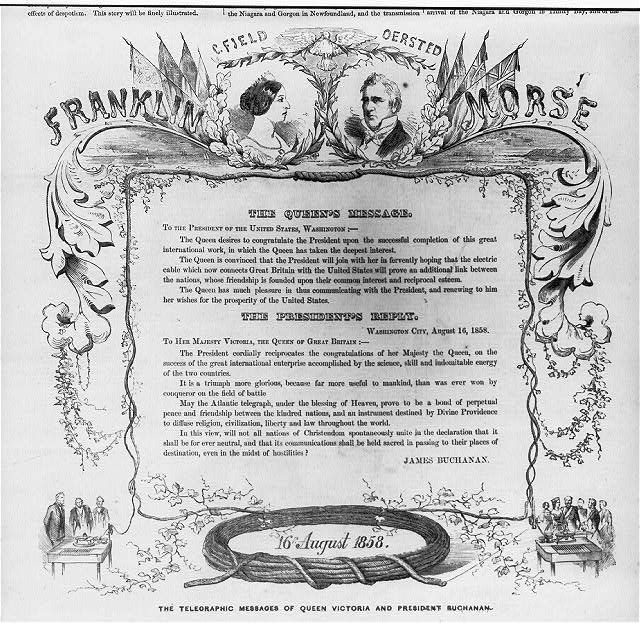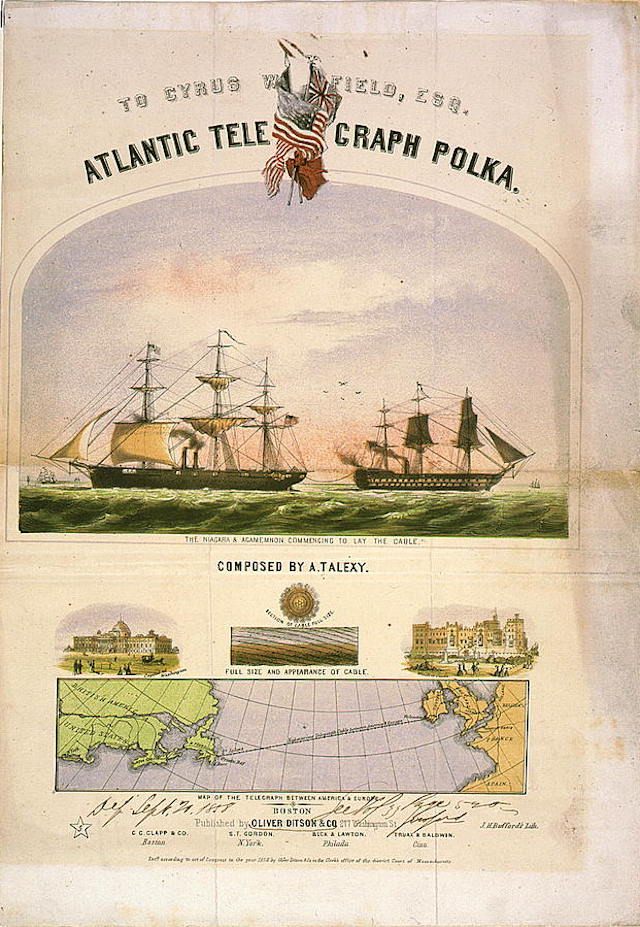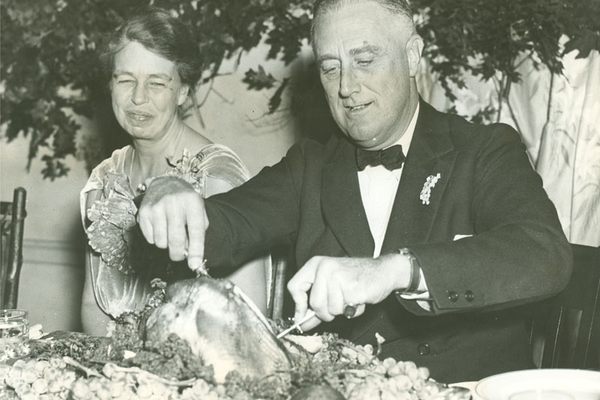New York Once Threw a Giant Parade to Celebrate a 1,600-Mile Cable
It was the first telegraph cable across the Atlantic.

More than 90 years ago, when Macy’s sponsored its first Thanksgiving Day Parade, the floats and marchers went right up Broadway. Parades had been a New York tradition since Irish soldiers first marched on St. Patrick’s Day in 1762, and the largest and most memorable among them took over Manhattan’s main thoroughfare, the one that cuts through the city’s mostly regular street grid.
But one of the greatest parades to ever march up Broadway—one that “exceeded everything in the way of public display ever seen in this country,” according to one newspaper correspondent—has for the most part been forgotten. In 1858, New York hosted one of its most boisterous and ebullient celebrations, the “Cable Carnival,” which honored a length of cable that connected North America to Europe for the first time.

The electric telegraph machine first started to gain popularity in the 1830s, and by the 1850s telegraph networks crisscrossed much of the United States and large parts of Europe. But intercontinental communication still took the form of letters shipped across the ocean, which meant that the fastest message from London to New York required a couple of weeks to reach its destination.
In 1854, Cyrus W. Field, a wealthy businessmen, started considering the possibility of a transatlantic telegraph cable. He had first been approached about funding a line from New York to Newfoundland, but when he learned that the distance from Newfoundland to Ireland was one of the shortest paths across the ocean, he started dreaming of a longer-distance connection. In 1857, a fleet of ships set out from Ireland, spooling out behind them a cable approximately 1,600 miles long.

In August of the next year, the cable made landfall in Newfoundland, and Queen Victoria soon sent President James Buchanan the first transoceanic telegraph message, in which she wrote:
The Queen is convinced that the President will join with her in fervently hoping that the electric cable, which now connects Great Britain with the United States, will prove an additional link between the two places whose friendship is founded upon their common interests and reciprocal esteem.
New York already had a tradition of throwing grand celebrations upon the completion of ambitious 19th-century infrastructure projects, including the Erie Canal and the old Croton Aqueduct, which provided water to the city. But the parade that New York threw for Field and his cable outdid them all.
It began in the morning with a service at Trinity Church. In the afternoon, the crew that shepherded the cable across the Atlantic was supposed to travel up the length of Broadway to the Crystal Palace at what is today Bryant Park, accompanied by a scale model of the ship and a coil of cable.

But, as the New York Herald reported, the crowd grew so thick that the crew, their military guard, and the other marchers could hardly get through. People had begun to gather at 10 am, and by noon the streets had become so busy they were “almost impenetrable,” according to the Herald. Estimates of the crowd range from half a million to upwards of a million people—more than New York’s population at the time.
It was, the Herald wrote, “a spontaneous outburst of public enthusiasm such as one cannot see but once in a lifetime,” and full of “the general hearty and cordial feeling with which all nationalities joined to celebrate the grand event of the age … From Fourteenth Street to the Battery the whole pave [sic], from house to house on either side, was alive with a surging, swaying, eddying crowd.”

The marchers did eventually reach the Crystal Palace, where they were treated to a lavish dinner and a rendition of the “Atlantic Telegraph Polka.” But the party wasn’t over. At the Crystal Palace there were fireworks, columns of fire, and lots and lots of stars, flaming and otherwise. There was even a statue of Neptune holding a trident and the telegraph cable. And down at City Hall, which was “almost hidden under a profusion of banners and flags and streamers and bunting,” another parade began—a procession of torch-bearing firemen making their way uptown. The crowds stayed out well past midnight, and even after that, wrote the Herald, “the streets did not resume their wonted aspect.”
The celebration nearly lasted longer than the cable itself. Only 366 messages passed through the wire before it went dead. It took another eight years before another telegraph cable made it across the Atlantic, and the second celebration was much more muted. The cable, however, lasted far longer.










Follow us on Twitter to get the latest on the world's hidden wonders.
Like us on Facebook to get the latest on the world's hidden wonders.
Follow us on Twitter Like us on Facebook